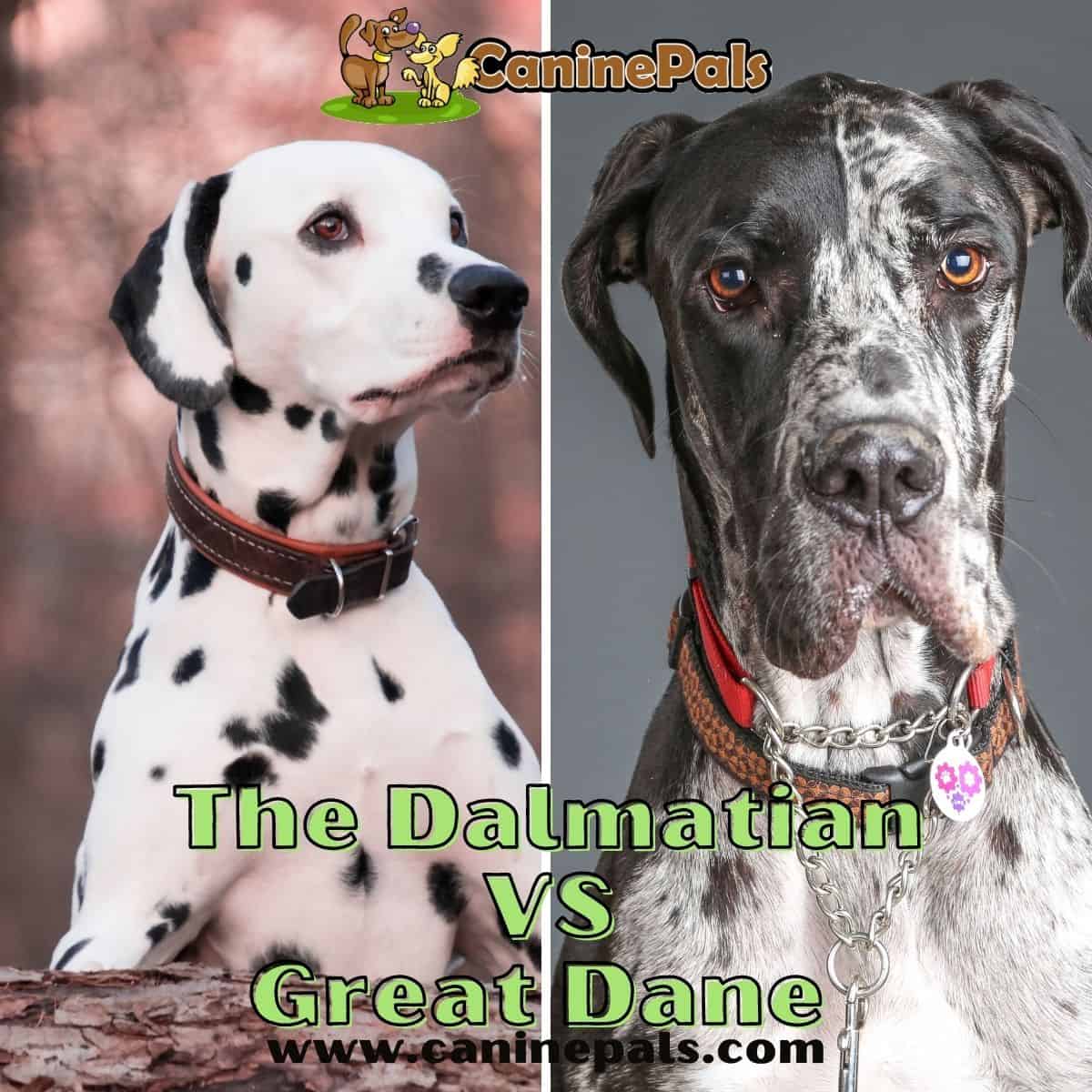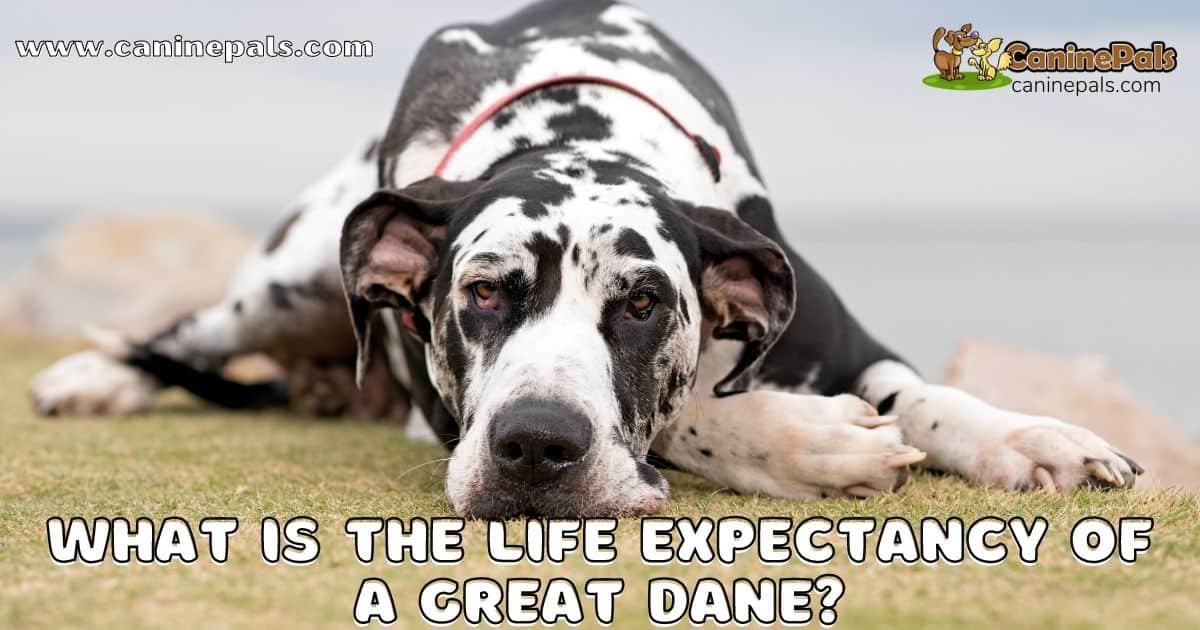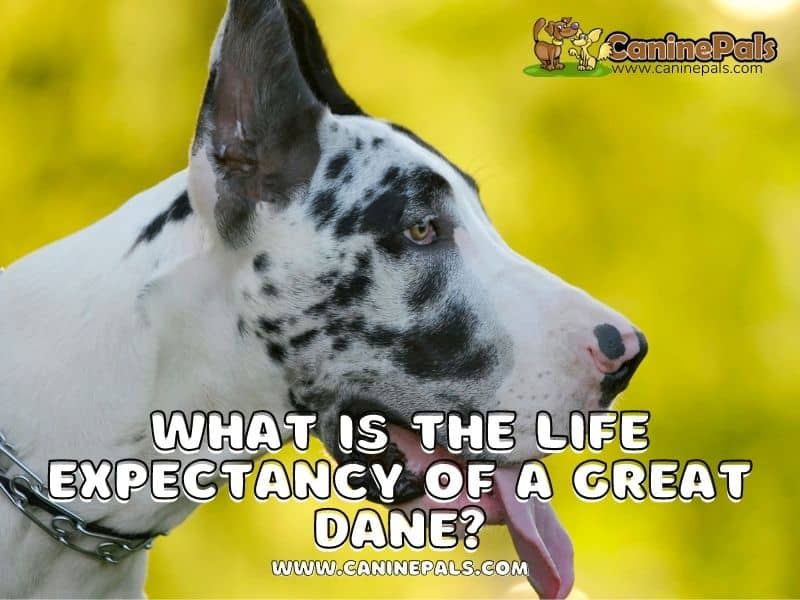It is no secret that dogs are among the most popular and endearing pets, and with good reason. They provide companionship, loyalty, and protection. But some breeds genuinely stand out from the crowd.
The Dalmatian and the Great Dane are two examples of these popular breeds. Both are great companions and can be trained to do just about anything. Are you wondering which one is the best dog for you?
Keep your eyeballs glued on the screen for a few minutes to evaluate the two dog breeds. The article, Dalmatian versus Great Dane, aims to help you decide which best suits your lifestyle.
Keep reading!
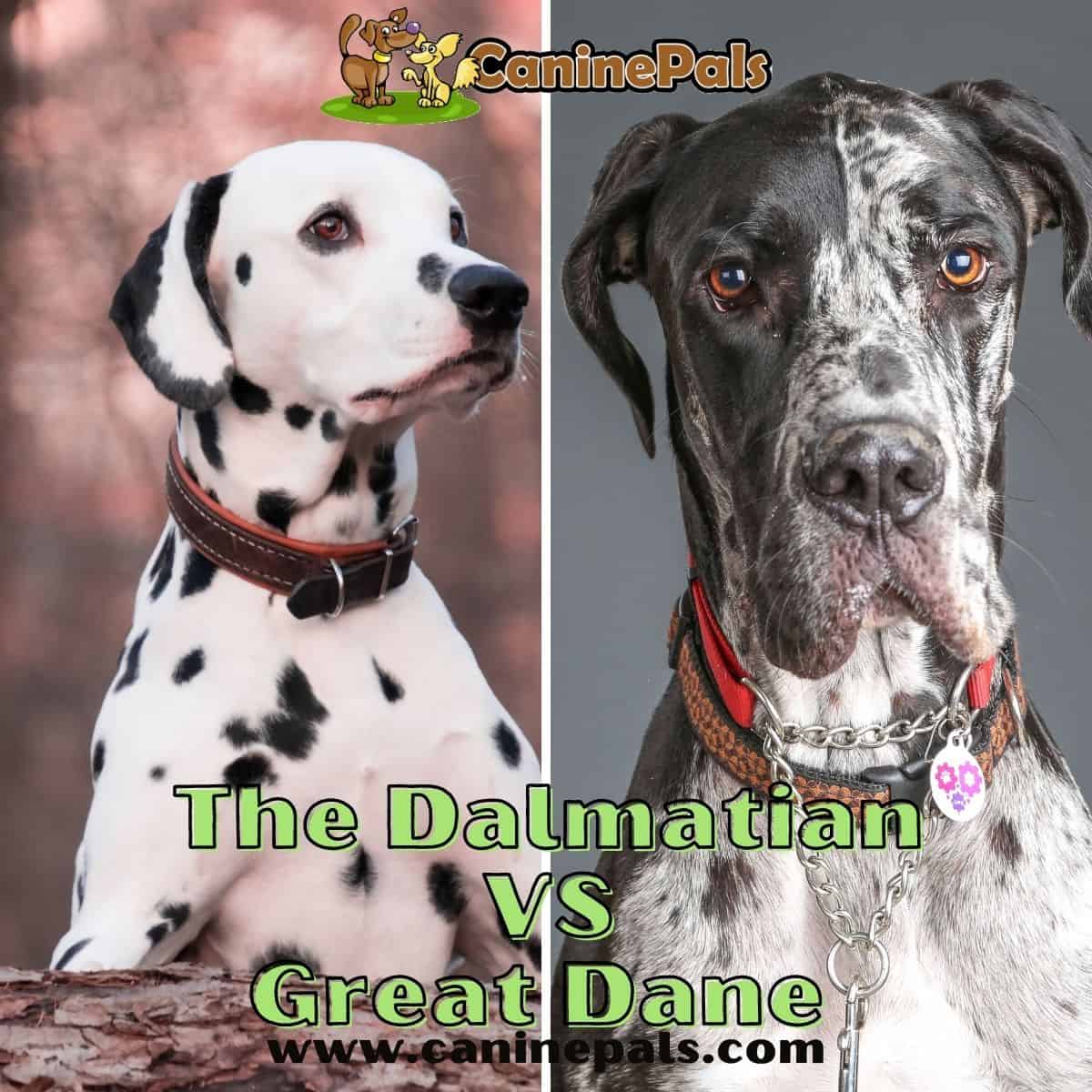
The Difference Between Dalmatian And the Great Dane
The Dalmatian and the Great Dane are two breeds of dogs that are often confused. Despite their similarities, however, the key differences between these breeds set them apart.
1. Temperament
Generally, the two dogs are friendly and make up a good family dog. However, the temperament of these beautiful dogs depends on the person.
The Dalmatian breed is known for being energetic, playful, and friendly dogs. They are very social and love spending time with their families.
Additionally, they are known for having a high energy level, which can be controlled with proper training and socialization.
However, they tend to be stand-offish and apprehensive in front of strangers and can react aggressively in front of them. The Great Dane’s temperament is amazing.
On the other hand, Great Dane dogs are calm, gentle giants who enjoy spending time with their owners and surrounding pets in the house. They are not very playful, but they love to cuddle with their favorite human and give them lots of kisses!
Great Danes take time to hit maturity and are easily scared of strange faces. In addition, the presence of strangers makes them aloof, and they may use more protective instincts than usual.
2. Intelligence
Both breeds are considered intelligent and competent. Dalmatians’ independent minds and ability to devise different ways to do a specific task make them intelligent breeds.
On the contrary, Great Danes are considered as smart as a three-year-old baby. They can understand different words and gestures and learn new tricks instantly.
3. Housebreaking
You probably want a dog because it can protect your home from intruders or other threats. Dalmatians are known for being good watchdogs because of their higher intelligence and sense of smell. When trained properly, they make up great watchdogs.
Great Danes’ giant size keeps the intruders away from home, but they aren’t as good at this role. They bark at strangers when they come to the door, but they don’t tend to be very aggressive towards strangers unless they feel threatened by them, which isn’t always ideal if you live in a neighborhood where crime happens often.
4. Training
Dalmatian dogs are much easier to train than the Great Dane breed. Dalmatians are highly intelligent and have a strong desire to please their master. Therefore, training a Dalmatian isn’t challenging if you use positive reinforcement methods like praise and treats.
This happy-go-lucky dog breed yearns to make his owner laugh with his silly actions. However, firm training is required because they have a stubborn streak and may not respond to requests if they don’t want to.
Like the Dalmatian breed, Great Dances are intelligent and pick up things easily. In addition, their love for humans and other animals makes them easy to train.
Starting the training as early as possible is recommended to avoid behavioral issues. Regular training sessions and sweet rewards can help the Great Dane overcome their aggressive attitude.
5. Energy Level
Dalmatians are energetic dogs that require regular exercise to stay happy and healthy. If you aren’t able to take them for walks, play games with them every day, or give them enough exercise, they may become destructive or hyperactive, chew furniture, run around like crazy, or get into mischief.
On the contrary, Great Danes are not energetic with moderate exercise needs. They can enjoy boisterous play sessions all day long if they are followed by a rest or nap time.
6. Size and Weight of The Two Dogs
Dalmatians are medium-sized dog breeds. They can grow between 19 and 23 inches tall at the shoulder and weigh up to 40 to 60 lbs. Their average lifespan ranges between 10 and 13 years.
Dalmatians are sleek and smart and have a long, muscular body with a deep chest and broad skull. His ears are large and floppy, and he has a long, thin tail.
Great Danes are among the world’s giant dog breeds, reaching heights of 28 inches and weighing up to 175 lbs! Their average lifespan is eight years, but they can live up to 10 years.
Great Danes have a long, muscular body with a deep chest, large head, and long legs. They walk with a proud gait that shows off their athleticism.
7. Coat Type
Dalmatians have short, smooth, shiny coats that are easy to groom. Their short hair is hypoallergenic and sheds little, making the breed ideal for those with allergies or sensitivity to dog fur.
While Great Danes have a short, smooth coat but don’t fall under hypoallergenic dogs, they are moderate to heavy shedders and may not be good for sensitive people.
8. Health Issues
Dalmatians are prone to multiple health issues, and most of them are genetics. The diseases commonly found in Dalmatians include;
- Skin allergies
- Hip dysplasia
- Deafness
- Urolithiasis
- Cardiomyopathy
The diseases commonly found in the Great Dane breed include;
-
- Bloat
- Allergies
- Hip dysplasia
- Cardiomyopathy
- Wobbler syndrome
- Cataracts
- Osteosarcoma
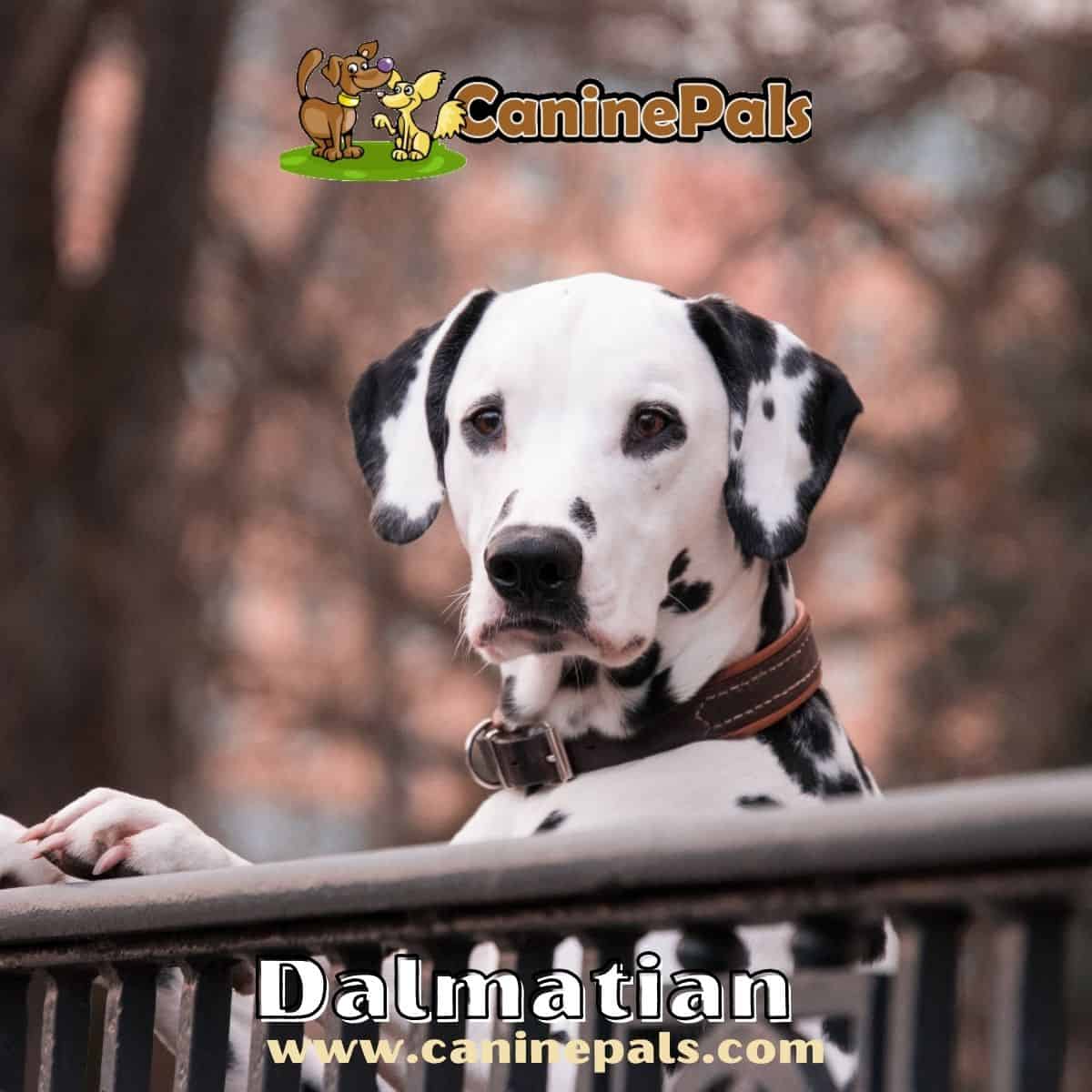
Great Dane Dalmation Mix
Loyal, smart, outgoing, watchful, and whatnot! The two purebreds, Great Danes and Dalmatians, are purposely crossbred to create a new breed known as the Great Dane Dalmatian Mix.
The new breed has all the fabulous attributes of the two purebreds. The Dalmatian mixed Great Dane puppy is a unique breed that has adopted the size of a Great Dane parent and the beautiful spot markings of Dal parents.
Despite being large, the cool breed doesn’t require excessive exercise, making them great house dogs.
Pros of Having A Great Dane Dalmatian Mix Pup as a Pet
Dogs are beautiful and majestic, with uncountable perks that make them perfect for the home. Like every other pet breed, Great Danes and Dalmatians have many benefits.
Below are some wow perks encouraging you to get one for yourself.
1. Adequate Amount of Exercise
Unlike purebreds, Great Danes and Dalmatians require moderate exercise daily despite their large size. However, they don’t need intense workouts or exercise to keep them happy and healthy.
This means they can do well in apartments and smaller houses without a big yard or space to run around.
2. No More Daily Maintenance
The Great Dal has a smooth, short coat. It requires moderate grooming and sheds little to none, which makes it ideal for people with allergies.
The pup needs to be brushed once or twice in 7 days and bathe, and your pup is all good-looking.
3. Bundle of Love
This breed gets along with kids, neighbors, pets, and strangers. However, training them early is recommended to prevent destructive attitudes.
4. No More Housebreaking
The Dalmatian mixed with the Great Dane has given birth to the perfect watchdog. The large size and high barking tendency keep the intruders far away from your sweet home.
5. Effortless Training
Please give them a command and see them fulfilling it in the blink of an eye. The Great Dal mixed dog breed is intelligent and smart enough to catch your gestures and commands and make a move accordingly, which makes the training effortless.

Cons of Having A Great Dane Dalmatian Mix Pup As A Pet
No doubt, the perky perks of the Great Dane Dalmatian mix are an ace up the sleeves of many dog owners. However, a few features need to be considered before getting one.
1. Newbie Owner? Not For You!
The unbeatable smartness of the Great Dal can become challenging for first-time dog owners. The regular training sessions and a handful of companionship require patience, for which most newbie owners aren’t mentally prepared.
2. Not Suitable For Small Spaces
Your sweet little apartment may not be feasible for this large dog breed. Because of their giant size, Great Dales require enough space to roam around and relax.
3. Can Turn into the Heart of Stone
The lively breed craves human attention and company. However, they can turn into hearts of stone, welcoming all the aggressive and harsh attitudes when left alone for longer.
So, if your job consumes your extra duty hours and requires frequent traveling, Great Dal isn’t the right option.
Great Dane and Dalmatian Colors
Dalmatians are found in beautiful liver and white and black and white color combinations. The light and dark spot hues make them endearing.
On the other hand, Great Danes are found in various colors, including black, brindle, fawn, mantle, blue, and harlequin. They may also have beautiful black-and-white marks on their bodies, putting cherries on their adorable bodies.
When the two purebreds are combined to make a hybrid dog breed, they adopt the temperament of the two purebreds, physical attributes, and color.
The Great Dane Dalmatian mix has a short, smooth, and shiny coat type, is found in amazing colors like Great Danes, and consists of prominent spots like Dalmatians.
Great Dane Dalmatian Mix Health Conditions
Large dog breeds are expected to have shorter life expectancy than others. The Great Dale has an average life expectancy of 8 to 13 years.
Like every dog breed and its parent breeds, Great Dals are prone to multiple health issues.
1. Diabetes
Continuous or excessive sugar consumption may increase the sugar level in the body, resulting in diabetes. In addition, the higher sugar level increases the chances of organ damage leading to death.
The Great Dal breed is prone to diabetes, which can negatively affect its health. So, keep an eye on your pup and the diet it consumes.
If your pup shows symptoms like excessive thirst, weight loss, increased appetite, and increased urination, consult a vet.
2. Orthopedic Disease
The orthopedic disease may be a cause of aging or increased weight.
If the dog consumes excessive food without adequate exercise, it may gain weight, eventually leading to orthopedic diseases.
Consult a veterinarian if your puppy is lethargic or has sore paws.
3. Elbow and Hip Dysplasia
The elbow and hip dysplasia are common in large dogs. If your dog is reluctant to move, climb stairs, jump, or move slowly, he might be fighting with hip or elbow dysplasia.
Moreover, the clicking sound in joints and continuous pain and shamble symbolize hip and elbow dysplasia.
4. Osteoarthritis
Several reasons, including hip dysplasia, elbow dysplasia, trauma, shoulder or knee dislocation, cruciate injury, and others can cause osteoarthritis.
If your dog shows symptoms like swollen joints, restlessness, whining, licking joints, or resistance to walking, jumping, or standing, consult a veterinarian.
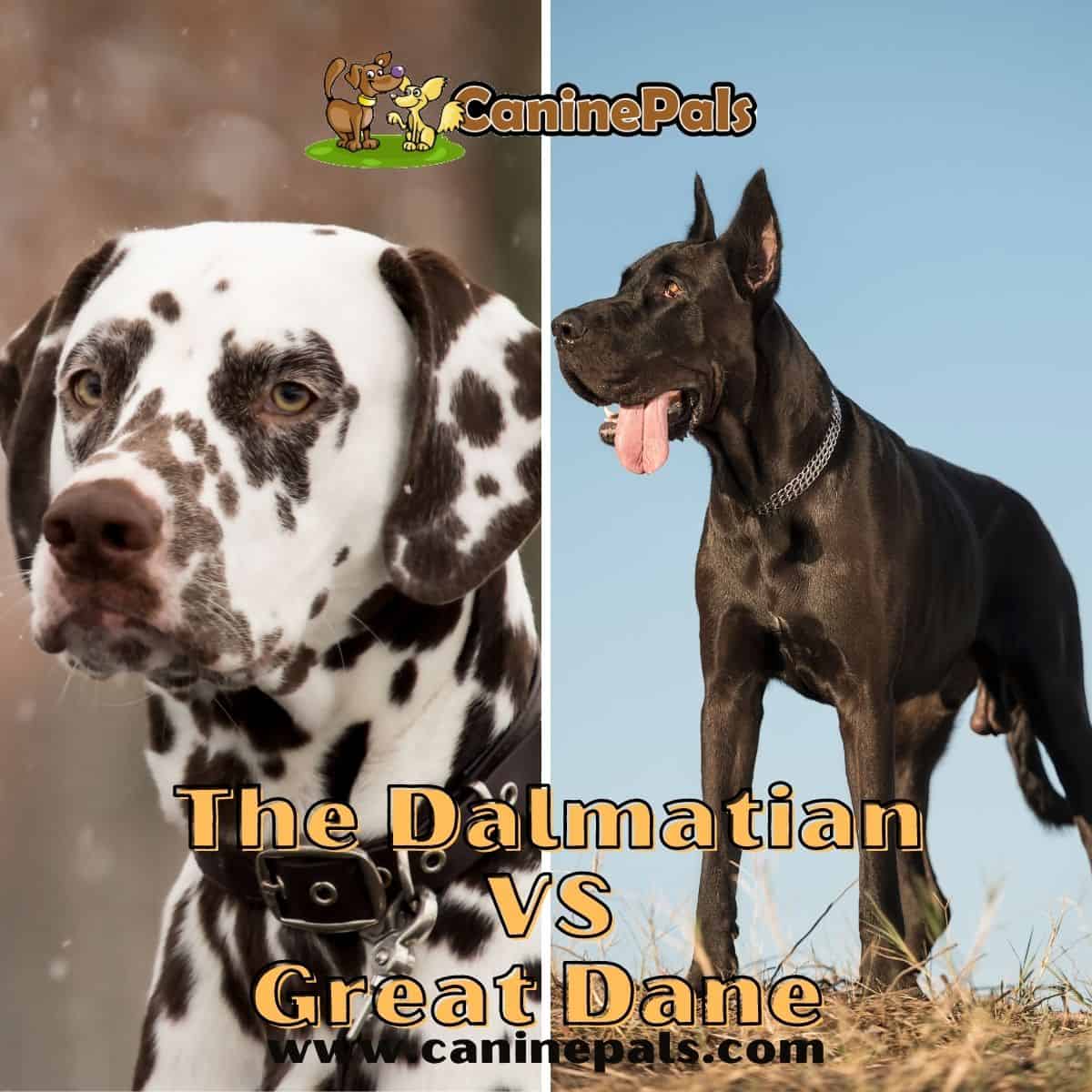
Final Words
Choosing between a Dalmatian and a Great Dane comes down to understanding the unique qualities each breed brings to a family. With their high energy levels and wanderlust potential, Dalmatians require a lot of exercise and thrive in environments where they can stay active.
Their intelligence and affectionate nature make them wonderful companions, especially for families with older children or individuals leading an active lifestyle. On the other hand, the Great Dane, known as the “Apollo of dogs” due to its impressive stature and gentle demeanor, demands attention due to its breed’s large size and need for consistent training from an early age.
Despite their intimidating personality, Great Danes are better described as gentle giants. They showcase great intelligence and an easy-going personality that can adapt well to families with young children.
.
Both breeds are purebred dogs, which highlights the importance of sourcing from reputable breeders to ensure a healthy and well-tempered new pet. Great Danes, often regarded as one of the best breeds for their affectionate nature towards family members, require a fair amount of space to accommodate their size. However, they are surprisingly good with novice owners due to their lower exercise needs than Dalmatians.
Dalmatians, with a slightly higher wanderlust potential, may serve better as watchdogs. However, both breeds exhibit traits that make them average watchdogs, with Great Danes potentially being the better guard dogs due to their sheer size.
Ultimately, the right breed depends on your lifestyle, the time you can dedicate to exercise and training, and whether you’re looking for a pet to grow with your family. Whether you lean towards the high-spirited Dalmatian or the majestic Great Dane, early socialization and training are crucial to fostering a well-adjusted and happy family member. Both these breeds can bring immense joy and companionship to pet parents, so choosing between them is a matter of personal preference and lifestyle compatibility.
Please note: while I do discuss health, care, and behavioral issues, you should never use this information as a replacement for advice from qualified veterinarians, diagnoses, or recommended treatment regimes. If you have any worries about your Dog’s health, your first contact should be your regular vet or, if you don’t yet have one, a vet that works locally. Never ignore or avoid treatment and advice from your vet because of a piece of information you have read on any website.
Copyright CaninePal.Com. All Rights Reserved.


